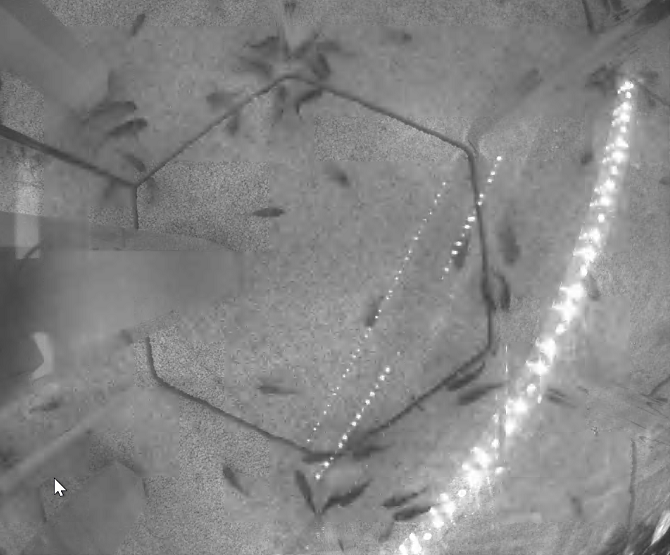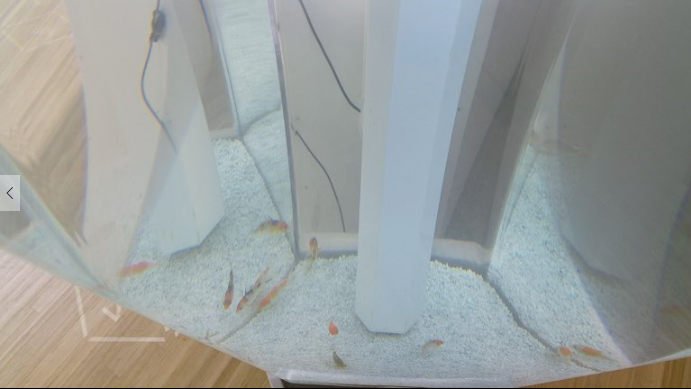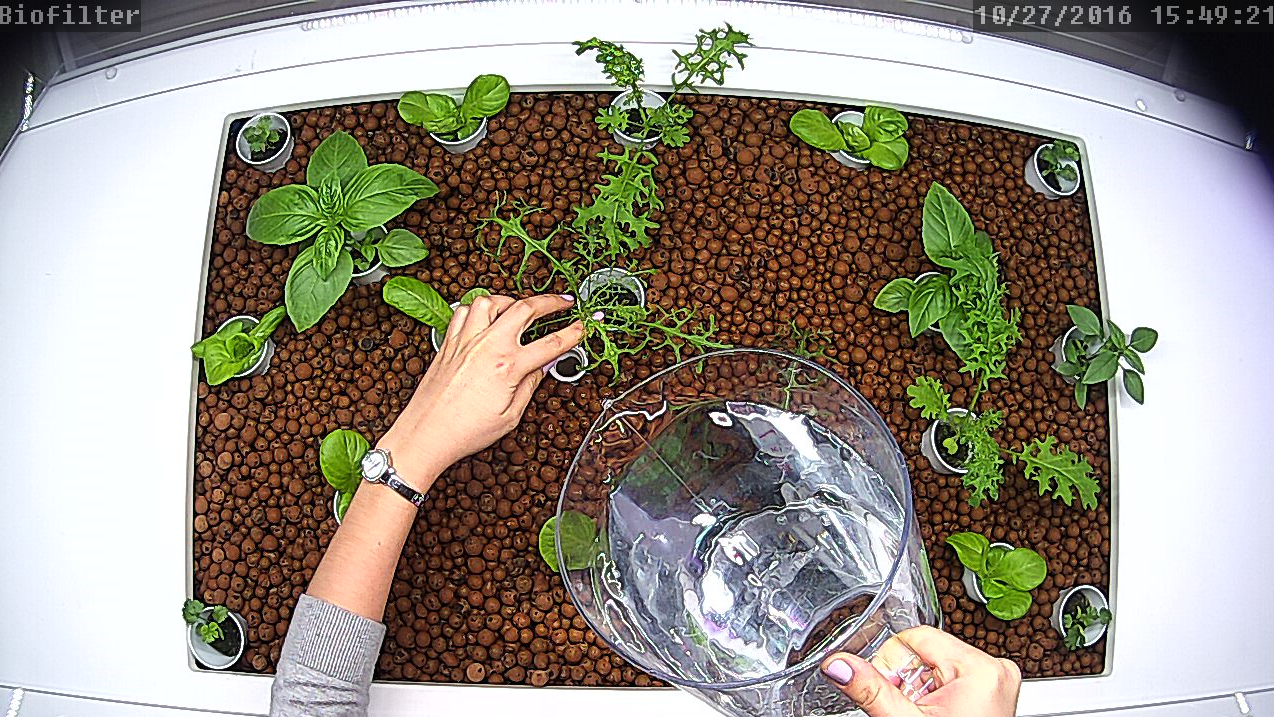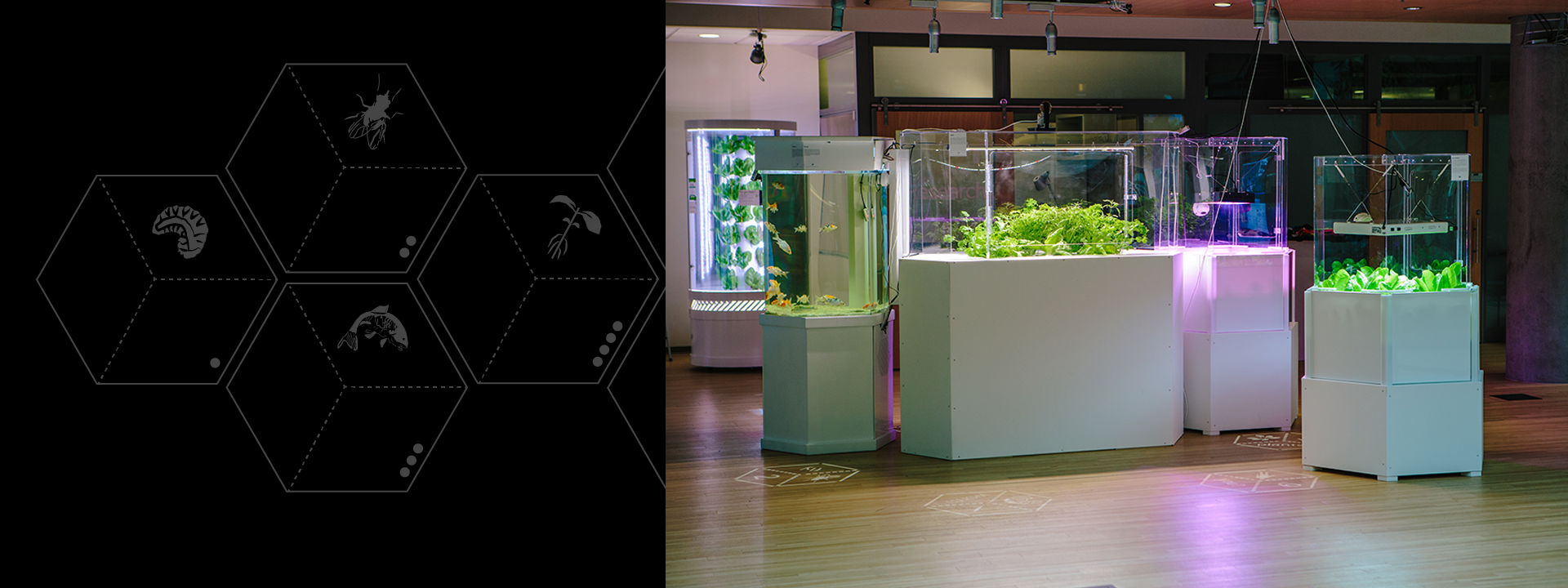Food Futures is a triad of Art, Science, and Technology that speculates on the future of our food production, consumption, and distribution models by 2050. This exhibition was inspired by the notion that humans and plants could communicate to one another through enhanced sensing capabilities and features a live broadcasting aquaponics and hydroponics system that is monitored by sensors and cameras to relay real-time tank and health analytics. We believe that the future of food will be supported by the infrastructure of the information age paired with new agricultural movements like aquaponics and urban farming. A world of connected devices, made intelligent and efficient through computational algorithms and cloud applications is already being constructed on our platforms. Food Futures is a collaboration between researchers Ranveer Chandra (opens in new tab), Paul Johns (opens in new tab), Asta Roseway (opens in new tab), Helene Steiner (opens in new tab), Spencer Fowers (opens in new tab), and urban farmers Jessica Schilke (opens in new tab) and Steven Jacobs (opens in new tab).
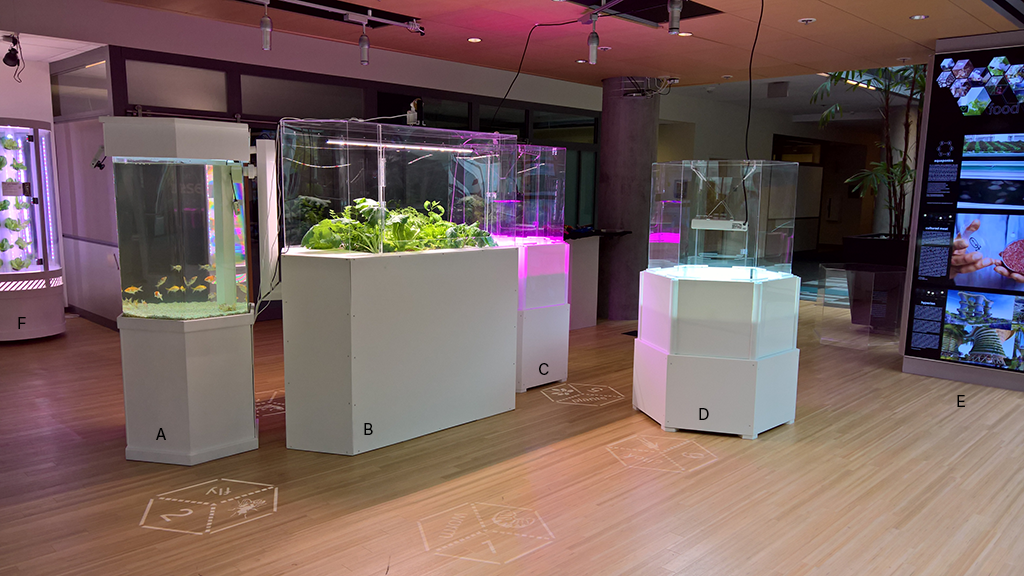
(A) Aquaponics (B) Biofiltration, (C,D. F) Hydroponics, (E) Data and Content Displays
The Green Revolution of the 1960s doubled agricultural yields and expanded the number of people on Earth by more than five billion. Yet success came at a price – an extreme dependence on fossil fuels, a marked decline in the variety of crops we grow, and a global production and supply chain easily toppled by unanticipated weather events. These are critical concerns. Over the next 100 years we must build a global food system that is robust to rapidly changing climates, which minimizes harm to Earth’s natural systems, and is capable of feeding 10 billion people living mostly in urban areas. We believe that the future of food will be supported by the infrastructure of the information age paired with new agricultural movements like aquaponics and urban farming. A world of connected devices, made intelligent and efficient through computational algorithms and cloud applications is already being constructed on our platforms. Future breakthroughs in Microsoft supported research, like FarmBeats (opens in new tab) and pervasive sensing technologies, may allow for radically new approaches to agricultural. Microsoft takes pride in empowering the world through technology. We are convinced that leveraging our products and services to help feed the world poses not only one of our company’s most exciting, but also most consequential, challenges yet…
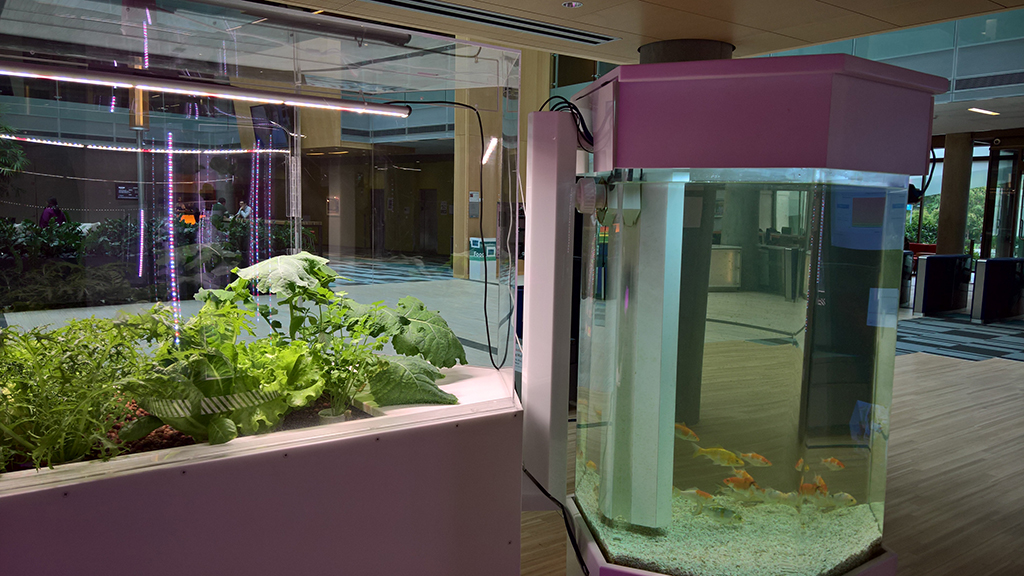
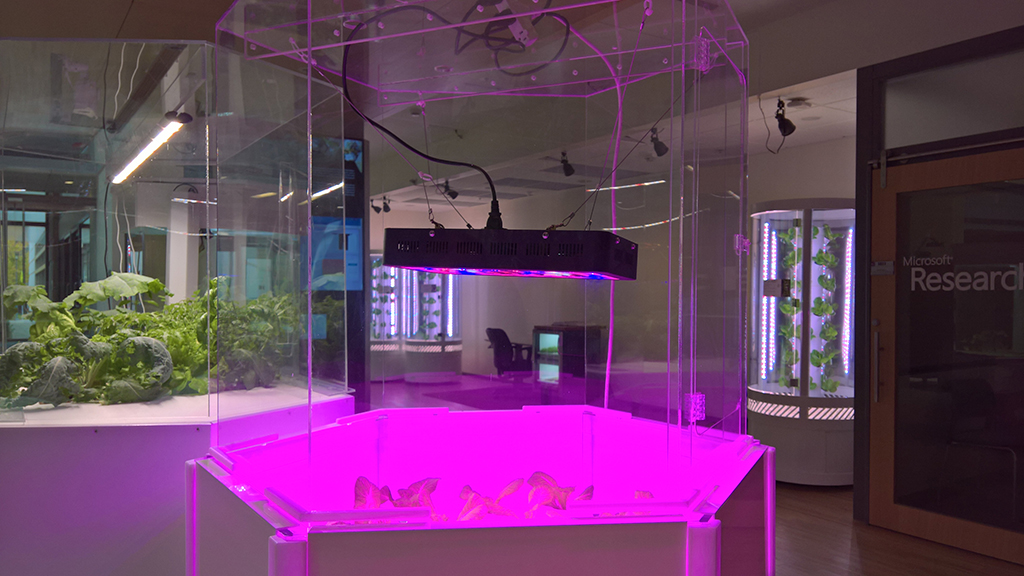
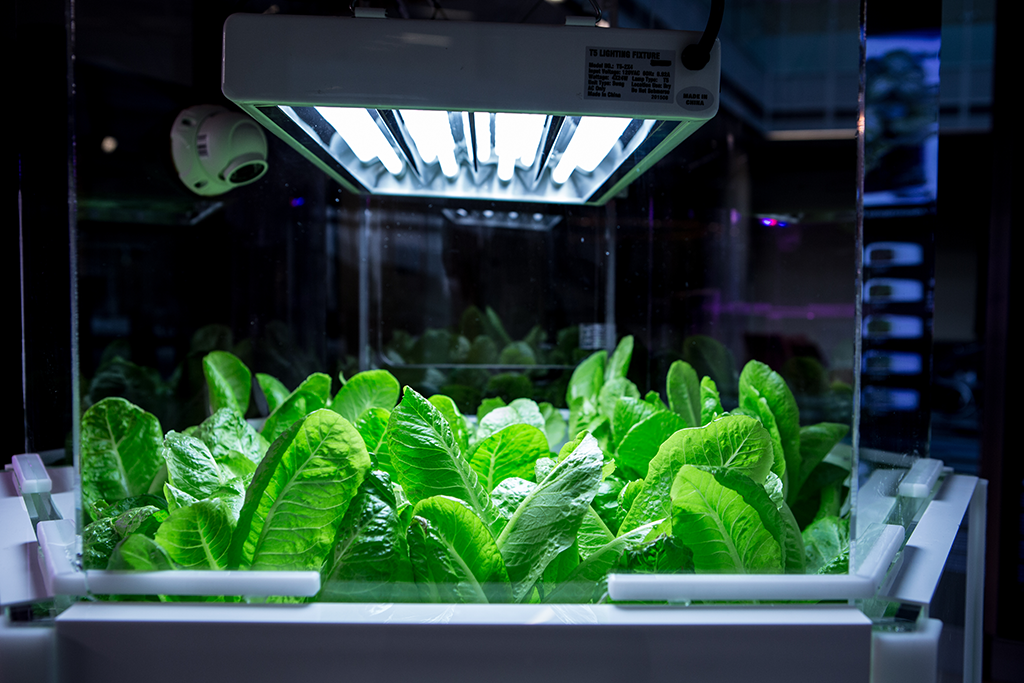
What is Aquaponics/Hydroponics and why does it matter in the Future?
Hydroponics, simply, is the growing of plants in nutrient solutions without the use of soil. These nutrient solutions are typically derived via laboratory synthesis from inorganic materials, but can also be made from organic sources using various fermentation and composting processes. In either scenario, the nutrients are shipped in from some other location and mixed with water at the site of cultivation. There are a wide array of hydroponic techniques and systems, which range from simple buckets (Kratky method) to fully automated ultrasonic sprayers. For a more thorough overview of the various types of hydroponic systems, check out this page (opens in new tab).
The primary benefit of hydroponic crop production is the vast water savings compared to soil farming. Using anywhere from 30-90% less water than outdoor field crops. However, there is still some amount of nutrient wastewater that must be flushed or rinsed periodically.
Aquaponics is the combination of aquaculture (growing fish) and hydroponics — specifically, growing plants and fish together in a recirculating nutrient solution. In the aquaculture industry, one of the primary wastes to deal with is ammonia excreted by the fish. This waste is often managed via off-site dumping and poses environmental challenges. Aquaponics uses biological communities of plants and bacteria to process this waste and return clean water to the fish. Because the systems are fully recirculating, there is no wastewater to manage, and thus no flushing or rinsing of the systems. This allows for aquaponics to save even more water, and have less environmental impact than even hydroponic farming. As an added benefit, these systems can produce both healthy protein in the form of fish, as well as nutritious produce.
As we move into the future, water is going to be a resource of increasingly grave concern. Properly managing our freshwater resources grows in pertinence each day. These systems will be integral to the successful management of this resource, as currently over half of global water use is for agricultural purposes.
Aquaponic Stages:
 1. Worms: When we’re finished with our food, we throw it “away.” Whether it’s going into the landfill, or an industrial composer, we’re keeping precious nutrients from returning where we need them most – where our food is growing. Most food waste can be converted biologically into useful nutrients for our bacteria, fish, and plants. Not only do they create a rich humid soil amendment, the worms themselves can be processed into fish food.
1. Worms: When we’re finished with our food, we throw it “away.” Whether it’s going into the landfill, or an industrial composer, we’re keeping precious nutrients from returning where we need them most – where our food is growing. Most food waste can be converted biologically into useful nutrients for our bacteria, fish, and plants. Not only do they create a rich humid soil amendment, the worms themselves can be processed into fish food.
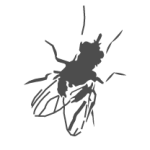 2. Flies: The black soldier flies are incredible waste recyclers. Not only can they eat nearly any type of food scraps, including things like meat and fish, raw poultry, and even pig manure. They’re also a prime candidate for supplementation in fish diets – recent experiments show black soldier fly larvae can replace up to 30% of channel catfish diets. This method of processing food waste creates useful methane gas as well as a nutrient rich by-product that can be used as fertilizer.
2. Flies: The black soldier flies are incredible waste recyclers. Not only can they eat nearly any type of food scraps, including things like meat and fish, raw poultry, and even pig manure. They’re also a prime candidate for supplementation in fish diets – recent experiments show black soldier fly larvae can replace up to 30% of channel catfish diets. This method of processing food waste creates useful methane gas as well as a nutrient rich by-product that can be used as fertilizer.
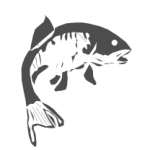 3. Fish: Fish are the next step in nutrient processing in Aquaponics. They make the nutrients locked up in fish food available to bacteria and plants in the system. Not only are they the primary fertilizer generators, they can also be grown to harvest, increasing nutritious biomass yield and water efficiency. In aquaculture (fish farming) wastewater is a large industry and environmental problem. Here, this fish waste becomes food for the other organisms inhabiting the system.
3. Fish: Fish are the next step in nutrient processing in Aquaponics. They make the nutrients locked up in fish food available to bacteria and plants in the system. Not only are they the primary fertilizer generators, they can also be grown to harvest, increasing nutritious biomass yield and water efficiency. In aquaculture (fish farming) wastewater is a large industry and environmental problem. Here, this fish waste becomes food for the other organisms inhabiting the system.
 4. Biofiltration: The real magic happens in the biofilter. Bacterial colonies, once established, continually process the ammonia (NH4) into nitrites (no2) and then nitrates (no3). While plants can uptake all of these forms of nitrogen, this nitrogen cycle is key for keeping the water from becoming toxic to the fish. Without these colonies, the waste water would need to be regularly flushed out and replaced.
4. Biofiltration: The real magic happens in the biofilter. Bacterial colonies, once established, continually process the ammonia (NH4) into nitrites (no2) and then nitrates (no3). While plants can uptake all of these forms of nitrogen, this nitrogen cycle is key for keeping the water from becoming toxic to the fish. Without these colonies, the waste water would need to be regularly flushed out and replaced.
 5. Plants: Plants take the nutrient rich water, processed by the bacteria, and bring the nutrients from the water through the roots and incorporate them into their cellular structures. The amount of plants that will grow is directly related to the amount of fish waste and they must be carefully balanced. Here you can see us growing a number of household vegetables, many varietals of: tomatoes, lettuce, kale, mustard, basil, and other herbs.
5. Plants: Plants take the nutrient rich water, processed by the bacteria, and bring the nutrients from the water through the roots and incorporate them into their cellular structures. The amount of plants that will grow is directly related to the amount of fish waste and they must be carefully balanced. Here you can see us growing a number of household vegetables, many varietals of: tomatoes, lettuce, kale, mustard, basil, and other herbs.
 6. Humans: The issue of food waste has picked up some considerable buzz recently, and rightly so. The problem goes far beyond simply appreciating the food that is in front of you. In fact, food waste–which is any uneaten food or food preparation scraps from residences, businesses, and other institutions–is a serious global economic, environmental, and moral issue. The world population is projected to hit 9.6 billion by 2050. Unless food waste is reduced, we simply will not be able to feed everyone.
6. Humans: The issue of food waste has picked up some considerable buzz recently, and rightly so. The problem goes far beyond simply appreciating the food that is in front of you. In fact, food waste–which is any uneaten food or food preparation scraps from residences, businesses, and other institutions–is a serious global economic, environmental, and moral issue. The world population is projected to hit 9.6 billion by 2050. Unless food waste is reduced, we simply will not be able to feed everyone.
System Design (layout/fabrication)
The design was inspired by one massive hexagon with 6 sides which were then reinterpreted as the 6 stages of the aquaponic unit. Each corner would then embody a stage projected by a gobo projector (seen in white). The tanks would then populate around the lit stages. Blue for fish, green for hydroponic/biofiltration and orange for decomposer tanks.
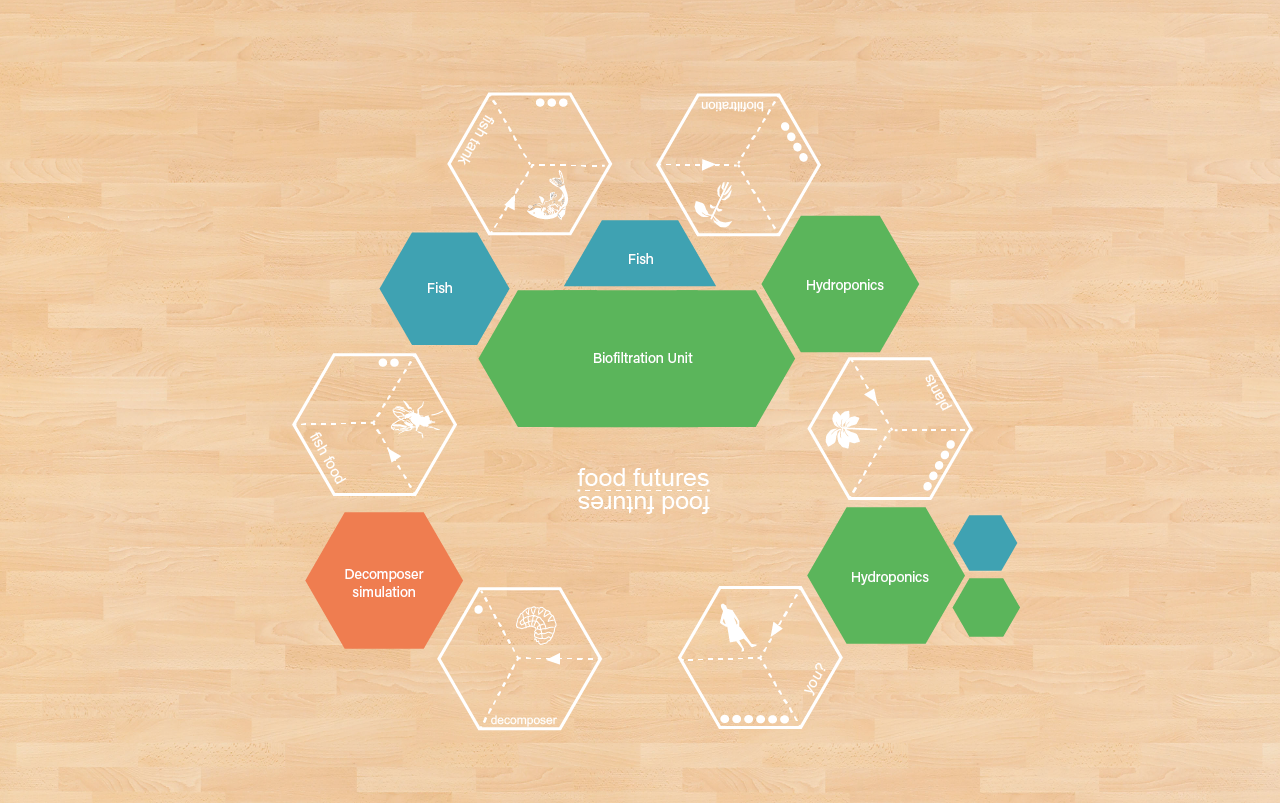
6 Stages of Ecosystem Floor Layout
Each tank, except the fish tank, was custom built by Aaron Arnolds. Here you can see the rendering we used to design the layout.
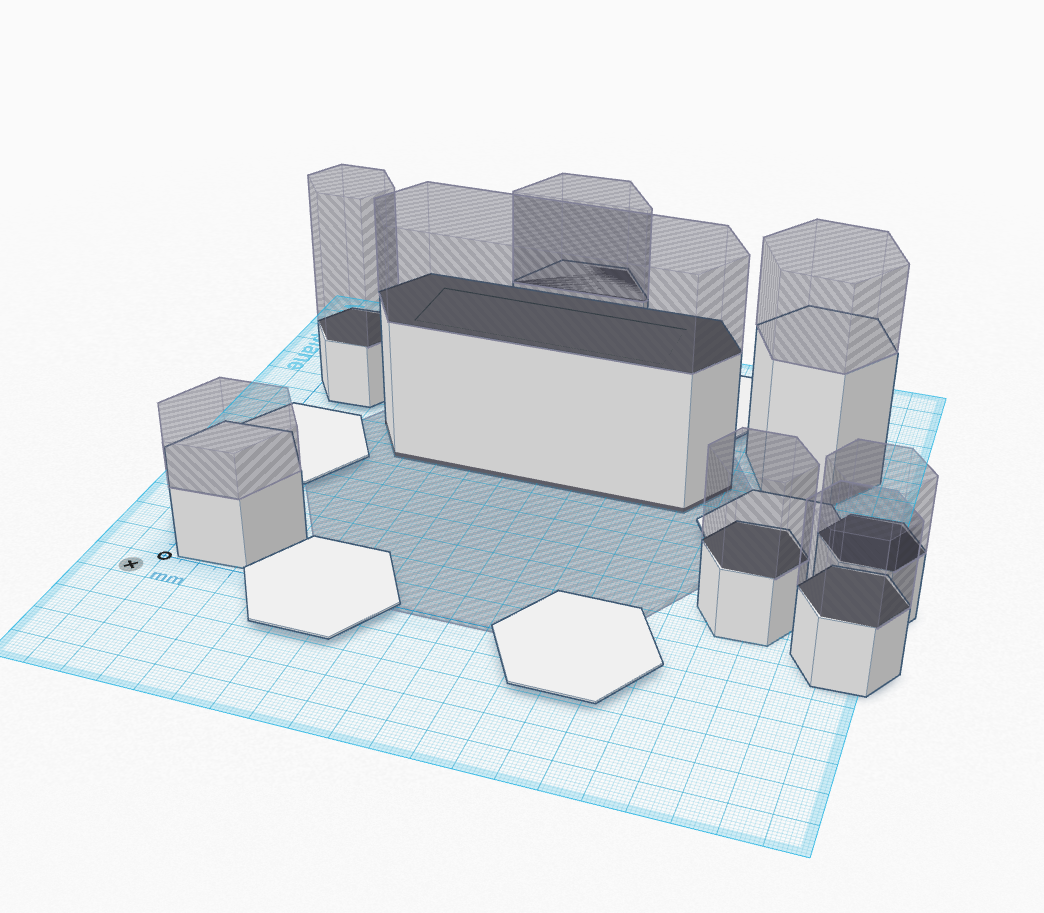
3D cad model of floor layout
Cameras: Fish Tracking/Depth Analysis, Daily Yield Growth
